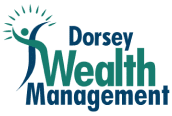How Financial Advisors Get More Booked Calls

If you’ve been following us for a while, you already know the importance of a consistent financial advisor marketing strategy. But you may wonder how your marketing efforts translate into what you really want: more booked calls.
How do you ensure your messaging cuts through the noise and drives prospects to take action with your firm?
The secret lies in mastering the prospect journey, blending automation with personal touch, and strategically diversifying your communication channels. If that sounds like a lot, don’t worry. In this article, we explain exactly what successful financial advisors do to get more booked calls.
Let’s dive in and discover how you can transform your outreach efforts and fill your calendar with high-quality prospect calls!
Understand the Prospect JourneyThe first step to getting more booked calls is to deeply understand the prospect journey. Doing so allows you to identify key marketing touchpoints and opportunities to engage more effectively.
Prospects generally go through three main stages before becoming clients.
AwarenessProspects become aware of your services through various channels like search engine results pages (driven by SEO), pay-per-click advertising, social media, referrals, and content marketing.
ConsiderationNext, prospects consider your services as a potential solution to their financial needs. At this stage, they will research your specific service offering including your expertise, credentials, and reviews. Assets like webinars, case studies, whitepapers, and a high-speed, mobile-friendly website are crucial elements in driving prospects to the next stage.
ConversionOnce prospects are satisfied that you have the right credentials and expertise to address their specific pain points, they will decide to take action, usually by booking a call to discuss their needs in greater detail. At this point, clear landing pages, convenient online schedulers, and strong calls to action are your main drivers of conversion.
Utilize Structured SequencesOnce you understand the prospect’s journey, you can use structured sequences to overlay your marketing efforts on top of what prospects will naturally experience as they explore your website and social profiles.
Structured sequences are a predefined series of communications designed to guide prospects through the journey from awareness to conversion. These sequences ensure that each interaction is purposeful and aligned with where each prospect is in their unique journey.
Rather than following up with prospects as you find the time or motivation to do so, structured sequences take the guesswork out of how you interact with potential clients, providing consistency in follow-up and improving the scalability of your marketing efforts. And the data shows that prospects prefer this coordinated and intentional form of communication.
In our extensive work with financial advisors, we’ve found that advisors who don’t use sequences average a 5-10% booking rate, while advisors who do use sequences average a 20-30% booking rate!

There are two types of structured sequences.
1. Automated SequencesAutomated sequences use technology to deliver pre-planned communications, making them ideal for maintaining consistent communication without overwhelming your schedule.
Let’s face it: You are not a full-time marketer, so you shouldn’t spend hours and hours tracking down prospects. Instead, let automated sequencing do the hard work for you.
Research shows that using marketing automation to nurture prospects increases qualified leads by 451%!
Examples of automated sequences include:
Email drip campaigns that send a sequence of pre-written emails automatically over time.Automated text messages that remind prospects of upcoming appointments or prompt them to schedule a call.Tools that automate LinkedIn connection requests, follow-ups, and messaging sequences.CRM tools that trigger specific actions based on prospect behavior, like sending a follow-up email when a prospect downloads a financial guide.2. Manual Sequences
Manual sequences rely on personalized touchpoints to build rapport and remind prospects that there is a real human on the other side of the screen.
Since handing over the keys to your financial life is a personal and sometimes difficult decision for prospects, the tailored approach of manual sequences can build trust in a way that automated sequences can’t.
Examples of manual sequences include personalized emails sent manually, phone calls, and handwritten notes.
Check the table below for some best practices for automated and manual sequences.
Automated SequencesBest PracticesEmail Drip Campaigns– Segment your audience so they only receive relevant content.– Send emails at optimal times based on when your audience is most likely to engage.
– Include clear and compelling calls to action to guide prospects toward booking a call.Automated Text Messages– Keep messages short and to the point.
– Provide value by including helpful information or reminders. DON’T just include promotional content.
– Respect privacy by obtaining consent before sending texts.LinkedIn Automation– Personalize connection requests to increase acceptance rates and establish a genuine interest.
– Space out messages to avoid overwhelming your connection and sounding spammy.Workflow Automation– Regularly review and adjust workflows based on performance metrics.
– Keep your branding consistent to provide a cohesive prospect experience.Manual SequencesBest PracticesPersonalized Emails– Invest time in understanding the prospect; craft a tailored message that addresses specific pain points and offers relevant solutions.
– Be personable! You should always maintain professionalism, but it’s important to be conversational and memorable too.Phone Calls– Prepare ahead of time; understand who you’re talking to and what they’re looking for. Be prepared to address potential objections in real time.
– Use a script to clearly articulate your value.
– Listen actively so you are fully focused on the prospect and can respond thoughtfully.Handwritten Notes– Mention specific details from your interactions to show that the note is personalized and not generic.
– Maintain relevance by sending notes promptly after significant interactions or milestonesDiversify Touchpoints
How do you receive daily communication? If you’re like most folks in the modern world, information is coming to you through email, phone calls, texts, LinkedIn messages, Facebook Ads, Google searches, and more. This highlights an incredibly important point about financial advisor marketing: Relying on a single communication channel is not enough in today’s digital landscape.
Research by Omnisend indicates that marketing campaigns involving at least three channels achieve a 287% higher purchase rate than single-channel campaigns. This means that a multi-channel strategy combining automated and manual sequencing is a must if you want to book more calls.
Here’s a sample multi-channel strategy for financial advisors.

The direct interactions above should also be combined with more passive touchpoints, like consistent posting and engagement with your audience on social media and utilizing targeted ads. This way, you stay top-of-mind for the prospect even if you are not directly communicating with them.
Optimize Your StrategyOnce you’ve developed and implemented your strategy, it’s time to optimize.
One of the best ways to monitor and adjust a multi-channel strategy is to utilize CRM tools, like Salesforce, Redtail, and Wealthbox. These tools provide a centralized platform to analyze key metrics and make adjustments as needed.
Keep an eye on your response rates, engagement levels, and conversion rates to better understand what’s working (and what’s not) with your prospects. You can also use A/B testing and feedback loops to compare different communication techniques and determine which approach resonates best.
 Book More Calls With Indigo’s Custom Marketing Solutions
Book More Calls With Indigo’s Custom Marketing Solutions Are you ready to transform your financial advisory practice and get more booked calls? At Indigo Marketing Agency, we help you stand out in a crowded market, engage with prospects more effectively, and convert leads into loyal clients.
With our expertise in custom content solutions and multi-channel marketing, we provide a comprehensive approach tailored to the unique needs of your business.
Don’t let potential clients slip through the cracks—contact us today to schedule your free strategy session!
 Schedule Your Free Marketing Strategy Call Today Let’s find out what’s working—and what’s not—when it comes to your marketing. Get Started
Schedule Your Free Marketing Strategy Call Today Let’s find out what’s working—and what’s not—when it comes to your marketing. Get Started 
 90%
90% New website visitors vs. returning visitors
Read Case Study
 50%
50% Increase in email click-through rate
Read Case Study
 44%
44% Increase in website traffic
Read Case Study
 21%
21% Website traffic from organic sources
Read Case Study
 73%
73% Website traffic from organic sources
Read Case Study
 20%
20% Website traffic from personal blog content
Read Case Study Previous Next FAQs What is the prospect journey, and why is it important for getting more booked calls?The prospect journey consists of three main stages: Awareness, Consideration, and Conversion. Understanding this journey is crucial because it allows financial advisors to identify key touchpoints and opportunities to engage prospects effectively. By aligning marketing efforts with each stage, advisors can guide prospects through the journey, increasing the likelihood of booking calls.
How do structured sequences help in converting prospects into clients?Structured sequences are predefined series of communications designed to guide prospects from awareness to conversion. These sequences ensure consistency and alignment with the prospect’s journey, providing purposeful interactions. By using structured sequences, advisors can improve follow-up consistency, scalability of marketing efforts, and ultimately, booking rates.
What are the best practices for using automated sequences in financial advisor marketing?Best practices for automated sequences include segmenting your audience to ensure relevant content delivery, sending emails at optimal times for engagement, including clear calls to action, and regularly reviewing workflows based on performance metrics. Tools like email drip campaigns, automated text messages, LinkedIn automation, and CRM-triggered actions can help maintain consistent communication without overwhelming your schedule.
Why is it important to diversify communication touchpoints in financial advisor marketing?Diversifying communication touchpoints is important because relying on a single channel is not sufficient in today’s digital landscape. A multi-channel strategy combining automated and manual sequences through email, phone calls, texts, social media, and ads significantly increases engagement and conversion rates. Research shows that multi-channel campaigns achieve a 287% higher purchase rate than single-channel campaigns.
How can financial advisors optimize their multi-channel marketing strategy?Financial advisors can optimize their multi-channel marketing strategy by utilizing CRM tools like Salesforce, Redtail, and Wealthbox to analyze key metrics and make necessary adjustments. Monitoring response rates, engagement levels, and conversion rates helps understand what works and what doesn’t. Implementing A/B testing and feedback loops can further refine communication techniques and improve overall effectiveness.
The post How Financial Advisors Get More Booked Calls appeared first on Indigo Marketing Agency.



